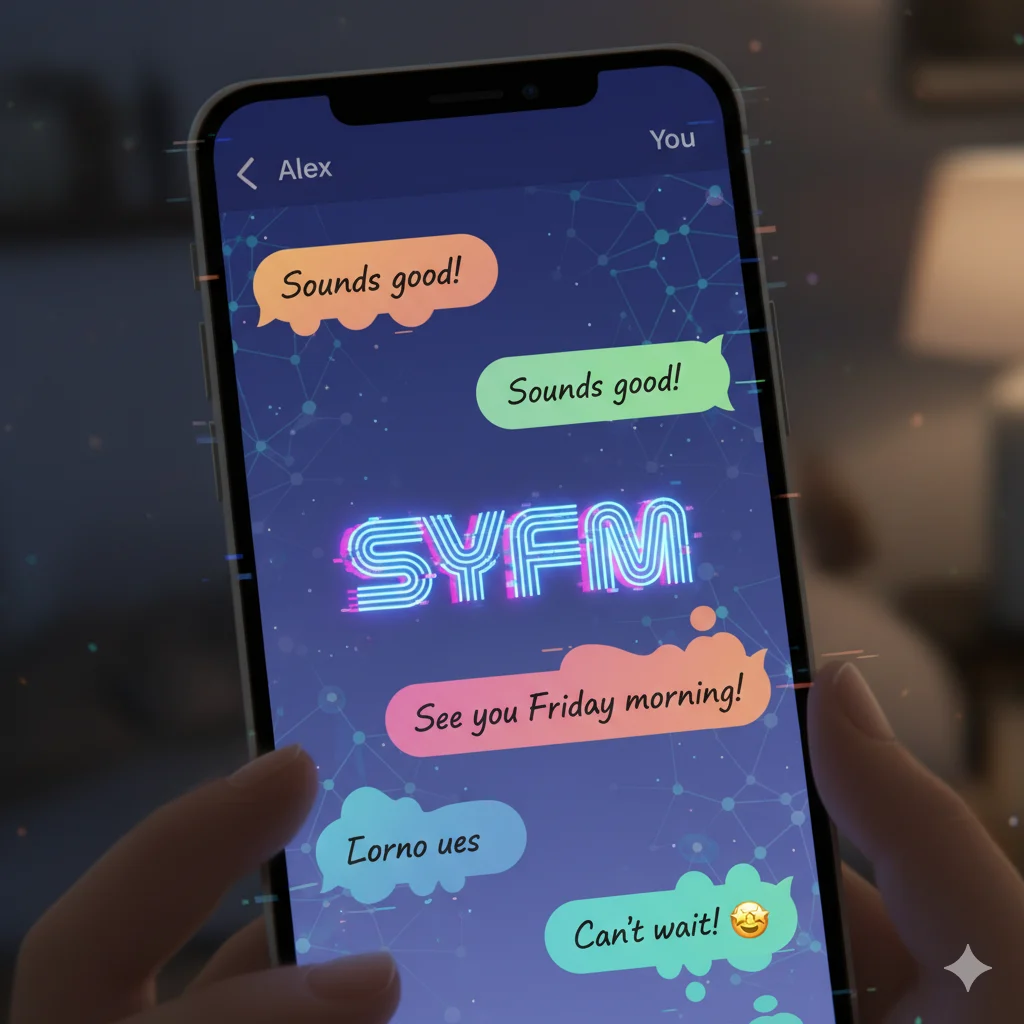In today’s fast-paced digital conversations, acronyms and slang dominate messaging apps, social media, and online gaming. One term you might encounter is “SYFM.” But what does it mean, and how is it used in modern communication?
Understanding slang acronyms like SYFM is essential to avoid miscommunication and to stay relevant in texting, Twitter threads, or dating apps. Misinterpreting a simple acronym can lead to confusion or awkward situations.
This guide dives into the definition, origin, usage, and nuances of SYFM, along with tips on how to respond appropriately in casual and professional contexts.
Definition & Meaning
The acronym SYFM stands for “Shut Your Freaking Mouth” (sometimes written with stronger language as “Shut Your F**ing Mouth”*). It is a casual, slangy way to tell someone to stop talking, often used jokingly among friends, online communities, or in memes.
Example Dialogue:
Alex: “Did you hear what Jake said about my game strategy?”
Jordan: “SYFM! He’s just jealous 😂”
Key Points:
- Expresses surprise, disbelief, or playful disagreement.
- Can be friendly or teasing, depending on context.
- Stronger versions may be considered rude in formal situations.
LSI Keywords: syfm definition, syfm slang meaning, syfm texting, syfm meme, syfm online chat
Background & History
SYFM originated in online communities and gaming culture where quick communication is key. Early internet forums and meme pages adopted acronyms to save time and convey tone.
Evolution Over Time
- Early 2000s: Used in chatrooms and message boards.
- 2010s: Became popular in Twitter threads, memes, and TikTok videos.
- Today: Widely recognized in texting, gaming, and social media conversations.
The acronym has evolved from a simple phrase to a cultural shorthand, often used humorously rather than aggressively.
Pro Tip: Knowing SYFM can help you read tone in memes and online jokes accurately.
Usage in Various Contexts
Texting
Sophie: “You actually like pineapple on pizza?”
Emma: “SYFM! That’s gross 😂”
Social Media
- Twitter: “SYFM, can’t believe they did that #meme”
- Instagram Comments: “SYFM, this is hilarious 😂”
Gaming Communities
- Used in competitive chats to express mock frustration or surprise:
“SYFM! You sniped me from across the map?”
Casual Conversations
Ryan: “He thinks he can beat me in chess?”
Mike: “SYFM, you’ve been practicing for months!”
Tip: The tone is playful or exaggerated, not necessarily hostile.
Common Misconceptions & Clarifications
Misconceptions:
- Always rude: Not necessarily; often playful or humorous.
- Only for online use: While common online, it’s also used in casual spoken conversations among friends.
Dialogue Example:
Alex: “Is SYFM rude?”
Jordan: “Depends—if friends are joking, it’s fine. In professional contexts, avoid it.”
Key Tip: Always consider the relationship and setting before using SYFM.
Similar Terms & Alternatives
| Term | Meaning/Use Case | Notes |
|---|---|---|
| STFU | Stronger version of SYFM | More aggressive; not for casual use |
| LOL | Laugh out loud, humorous reaction | Friendly, neutral |
| OMG | Expression of surprise | Neutral, universal |
| SMH | Shaking my head, disbelief or frustration | Casual, widely understood |
These alternatives can fit different levels of intensity and tone.
How to Respond to This Term
Depending on tone and context, you can respond in multiple ways:
- Casual/Friendly:
“😂 Okay, okay, I get it!”
- Funny/Playful:
“SYFM? That’s exactly my reaction too!”
- Professional/Neutral:
“I understand your point, let’s discuss it calmly.”
- Privacy-Conscious:
“I prefer avoiding slang like this in chats.”
Regional or Cultural Differences
- North America: Common in texting, social media, and gaming.
- Europe: Recognized among English speakers, mostly in online settings.
- Asia & Latin America: Less common outside English-speaking communities.
Tip: Understanding these differences prevents misinterpretation in global conversations.
Comparison with Similar Terms
| Term | Context | Connotation | Notes |
|---|---|---|---|
| SYFM | Texting, gaming, memes | Playful/disbelief | Casual, sometimes rude |
| STFU | Online, informal | Aggressive | Avoid in professional settings |
| LOL | Texting/social media | Friendly | Neutral, humorous |
| OMG | Texting/social media | Surprised | Neutral, widely used |
Usage in Online Communities & Memes
SYFM is heavily used in:
- Memes: To express shock, disbelief, or exaggeration.
- Gaming chats: To react to funny or unfair moments.
- TikTok & Instagram captions: Often paired with reaction videos.
Tips:
- Observe tone and context before using it.
- Combine with emojis for enhanced clarity and humor.
Hidden or Offensive Meanings
Though playful in most cases, SYFM can come across as rude or aggressive if directed at strangers or in professional settings. Always consider:
- Tone: Playful vs. serious.
- Audience: Friends vs. formal contacts.
- Platform: Online jokes vs. work emails.
Rule of Thumb: Use primarily in informal digital spaces.
Suitability for Professional Communication
- Not recommended in professional or formal communication.
- Use alternatives like:
- “Please stop interrupting.”
- “I disagree respectfully.”
- “Let’s pause and discuss.”
Example:
Instead of “SYFM!” in an email, write: “I respectfully disagree and would like to clarify my point.”
FAQs
Q1: What does SYFM stand for?
A: “Shut Your Freaking Mouth,” sometimes stronger as “Shut Your F***ing Mouth.”
Q2: Is SYFM offensive?
A: Can be, depending on context. Often playful among friends.
Q3: Where is SYFM used most?
A: Texting, memes, social media, gaming chats.
Q4: Can I use SYFM professionally?
A: No, opt for neutral alternatives like “please stop interrupting.”
Q5: Is SYFM the same as STFU?
A: Similar meaning, but SYFM is slightly milder and more playful.
Q6: Can SYFM be used in spoken conversations?
A: Yes, among friends in casual settings, but avoid formal contexts.
Q7: Is SYFM still trending?
A: Yes, primarily in online communities, memes, and Gen Z slang.
Conclusion
SYFM is a fun, casual acronym used to convey surprise, disbelief, or playful frustration. Understanding it helps you navigate online chats, memes, and gaming conversations without confusion.
Always consider tone, audience, and context to ensure proper usage. In professional settings, choose neutral alternatives. Mastering acronyms like SYFM can make you more fluent in digital communication and social media slang.



